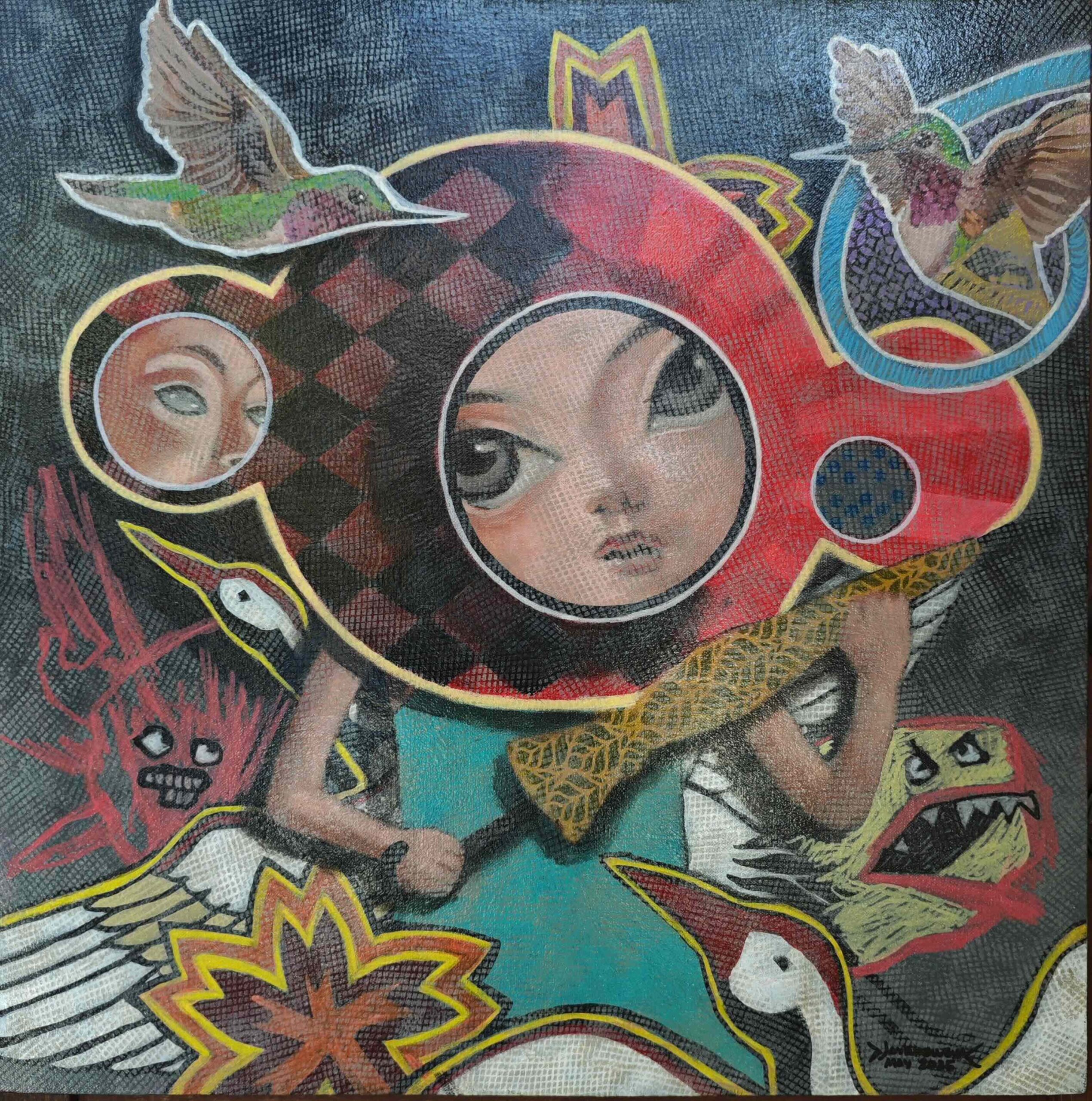Jay-R Delleva’s surreal universe continues to reflect the grit, humor, and heart of Filipino life. And crabs.
Jay-R Delleva is self-effacing, soft-spoken, and flashes a shy smile when quizzed about his works. He speaks about his art without any unseemly or inordinate pride. He reflects on his career, not with self-importance or off-putting hype, but with a quiet recounting of the many mini-milestones that have brought him here.
There is no boasting or posturing, but arguably, here stands a future giant, slowly building an artistic legacy.
At this stage, Delleva is able to boast of more than a dozen solo shows, as well as participation in multiple duo and group exhibitions at galleries in Cebu, Manila, Dumaguete, Iloilo and of course, Bacolod. His collectors are scattered across the globe, and his fans vary from lawyers, doctors, and politicians to business sharks. This is a testament to the universality of his works, that despite their earthiness and quirkiness, he appeals to a wide demographic that feels his vibes.

It’s been a long journey, for sure. Yet, while he is again preparing to unveil yet more of his strikingly metaphorical and allegorical canvasses for his solo exhibition in Manila, Delleva is content.
He is surrounded by the art he loves, and a nuclear family that envelopes him with what he needs (including a daughter, Leucia, who counts painting as one of her many extra-curricular activities, and yes, is already capturing art fans of her own). He is recognized by art lovers from all over the country, and not just in the sleepy sugar capital that is Bacolod, land of sugar barons and pastry chefs. As far as legit goes, artist Delleva is a real deal.
Related story: Art behind closed doors: Four artists unveil ‘Bed, Bath & Hubad’
Related story: An architect follows the artist’s arc: Mark Weigh pursues pop
Muses
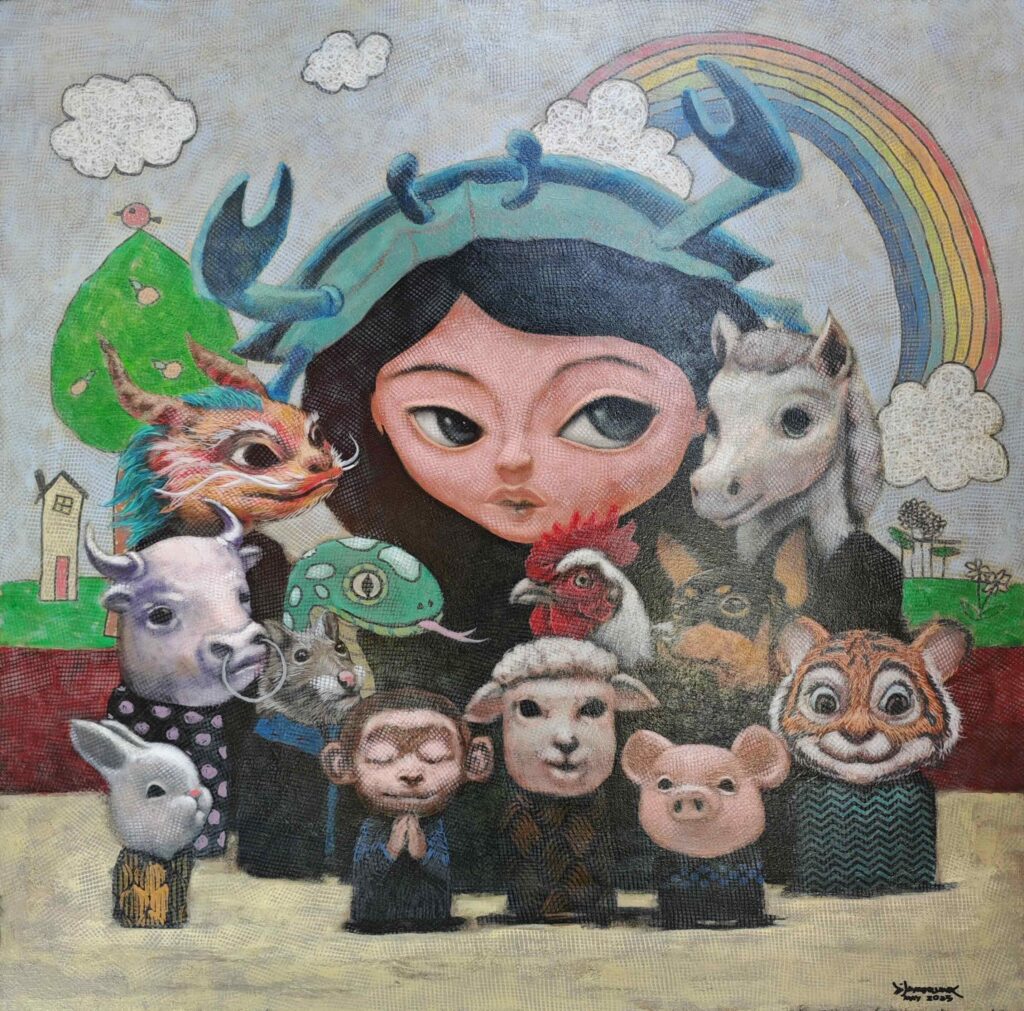
A graduate of Fine Arts at La Consolacion College in Bacolod, Delleva knew early on that he would spend his life in the arms of the muses. His girlfriend (now wife) was majoring in Fine Arts, and Delleva followed suit.
Awards quickly went his way, a recognition of his technique and originality. Delleva was a finalist at the 38th Shell National Student Art Competition (Watercolor Category) and twice a semi-finalist at the Metrobank Art and Design Excellence Awards (Oil and Acrylic, 2006 and 2010). In 2004, Delleva won third place in the Sculpture Category at the 37th Shell competition.
Early and much-needed validations for his life choice, indeed. Exhibitions came naturally thereafter, with his breakout solo collection being held in 2011 at the Orange Gallery in Bacolod. Entitled “Mga Dagway Sang Pobreng Espirito,” Delleva’s first one-man show immediately established him as a force to be reckoned with.
A fascination with crabs
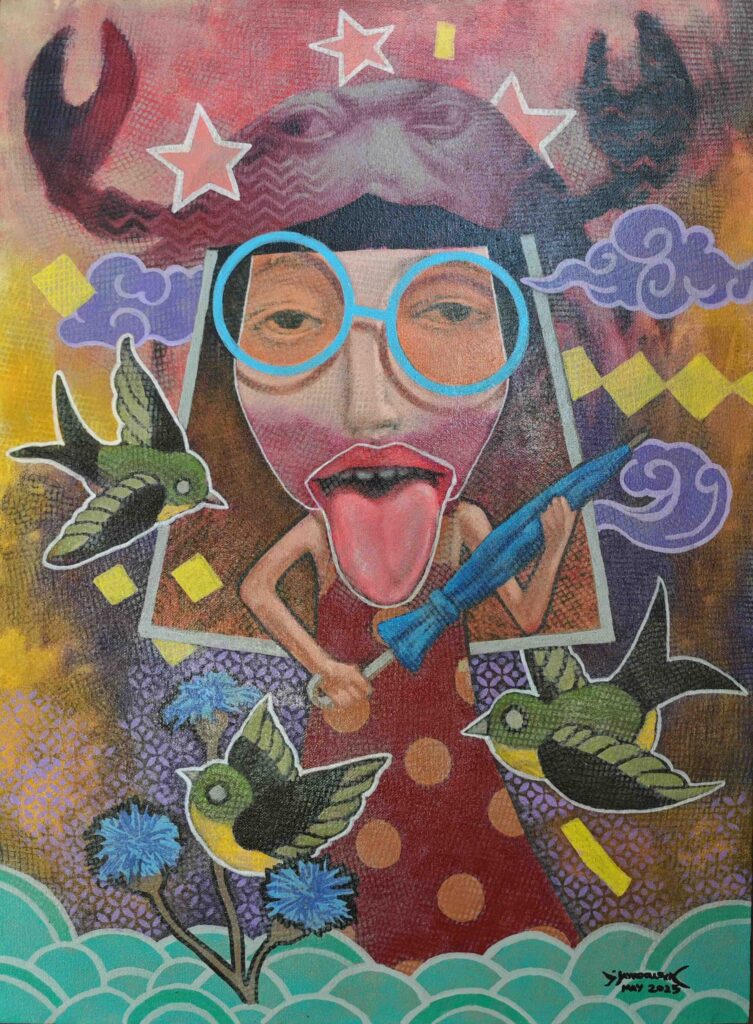
Delleva envisioned a parallel universe where, as is usual in the province, townsfolk play ordinary barrio games, toting bamboo poles as props and domesticated livestock to accessorize. Strangely, he decided to bequeath most of the denizens with crab-heads, as if to accentuate the then-popular zeitgeist of crab mentality.
Not all, though. Some of the paintings he debuted boasted cute-as-a-button pugs. Some mortals had fierce porcine snouts. More often, though, Delleva chose crabs. Tilted like hats, sporting multi-jointed legs, and crowned by crusty orange shells. The crab was the accessory du jour in Delleva’s alter-Bacolod.
Were these mutant folk bent on pulling each other down with their greed and envy, or were they merely visible symbols of the potential in each to be possessed by selfishness, avarice and pettiness? Not for Delleva.
“The crab represents resilience and defense, and its sidewise movement represents (the) unconventional approach. These few attributes are who we are. We have struggles and with what we possess, we are able to get by,” he says.
“I want my audience to think what they have been through, the challenges they have to overcome and the achievements they reached. We have different backgrounds and experiences that made us what we are today. We struggle, and after we fought our own battles, we not only survive, we live!”
Through that lens, we witness Delleva’s life, as well as his career-long fascination with crab heads. Perhaps, not so pronounced. Not exactly present in every exhibition. Yet every now and then, as Delleva fixates on sundry critters ranging from wraiths and damsels and mythological creatures, his crablets pop in and make cameo appearances.
Related story: String theory: The amazing thread art of Govinda Marquesto
Related story: Japan through time and lens: ‘TOKYO Before/After’ exhibit comes to Manila
Fantasy
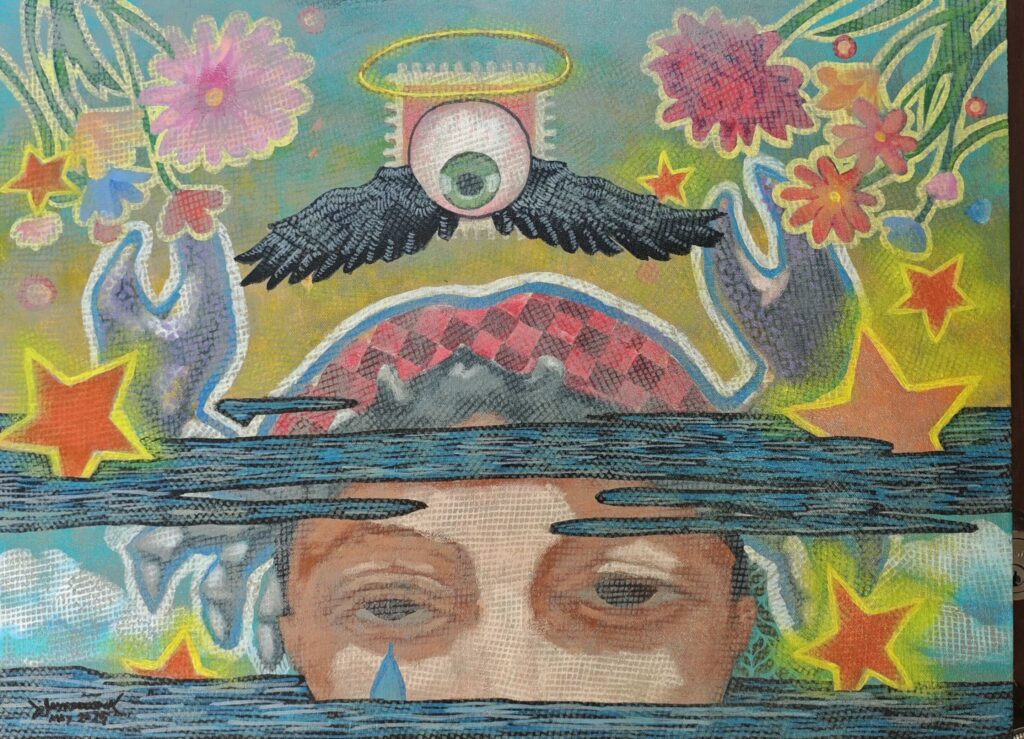
This was quite easy for him, as Delleva dwells in fantasy. Not necessarily the wispy, gauzy creatures of fairy tales, although plenty of fae populate his canvasses. Delleva’s denizens are earthier, rural, more visceral. Sometimes, they are adorned with craggy cheeks and sunken sockets, or situated in Philippine barrio fiesta scenes. Sometimes, they are caressed into life as wide-eyed gamines, almost ready to hop into a story book on Neverland and Narnia.
There is no singular definition for a Delleva original, no signature look that can encapsulate (or eventually outdate) him. Delleva flits from look to look, hopping from aesthetic to era to genre.
Imperial queens, and terrible tots. Bat-Boy-costumed waifs, and seductive Darnas. For an outer space-themed group exhibition at Modeka, Delleva dreamed up multiple astro folk crammed into a sardine tin, slimmed-down Teletubbies stuck on a landing pad. For yet another exhibition, Delleva cast the Pinoy mythical monster that is the forest kapre into a lovable ogre, more plushy buddy rather than dreaded ghoul.
Aleng Masag
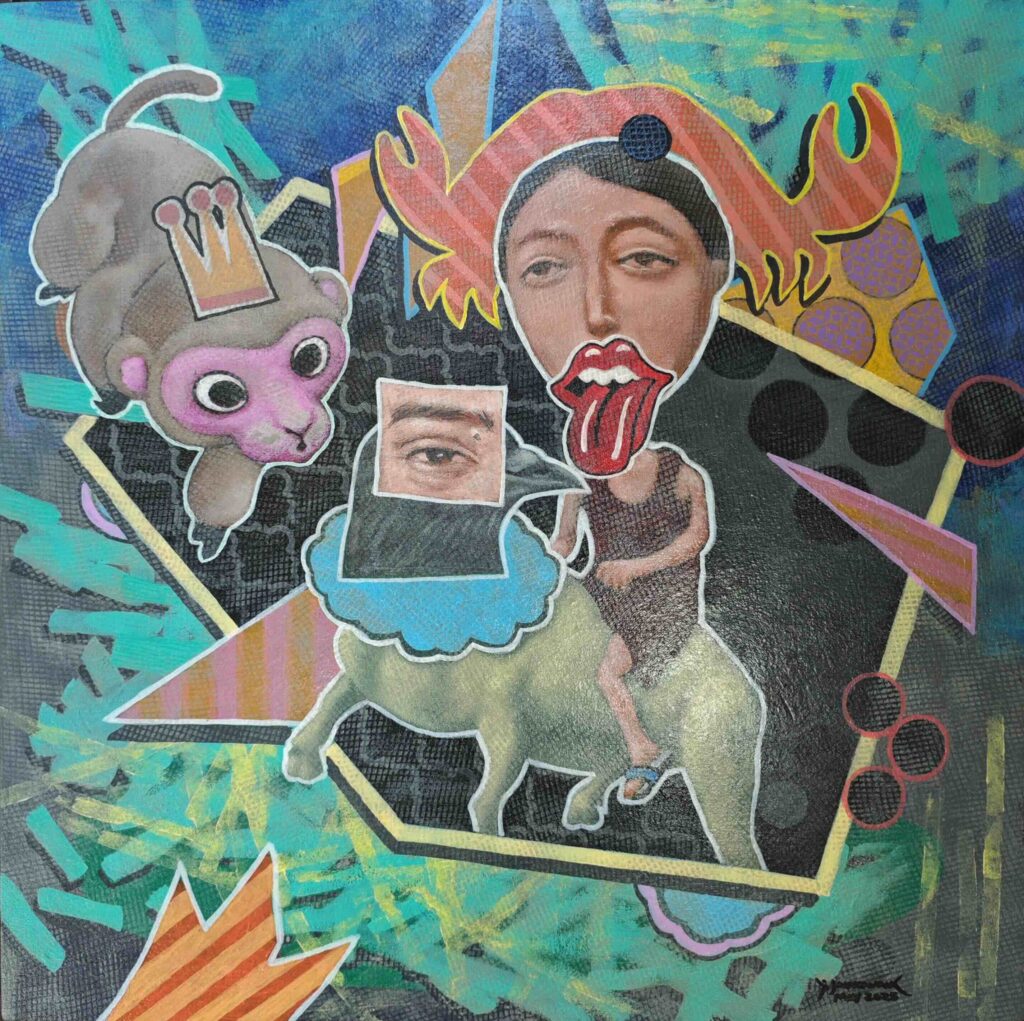
In 2022, Delleva premiered Aleng Masag, a crab granny armed with an umbrella and garbed in that ubiquitous Filipina house wear, the daster. With a stance like a fighting warrior lady, the foot-high toy sculpture poked fun at the Pinoy’s fondness for gossip and intrigue.
Three years down the road, this feisty crablette comes scuttling back in Manang Payong, Delleva’s latest solo. The indomitable Aleng Masag (and her family) takes center stage in a collection highlighting Delleva’s pop-surrealist bent and his technical virtuosity. Manang Payong is an ode to Delleva’s favorite crustacean, but more than that, it is a showcase of his continuing fascination with textures and the interplay of light with rough surfaces.
At a more obscure level, the collection is an attempt by Delleva to focus on feelings. “It is not always what the eyes see, it is what you feel. My art is always relatable to anyone. You may take it in a different perspective than I do because we have our own experiences. Despite how we show others how tough we are, there is always this fragile side within us that (enable us) to pause and reassess the situation.”
Delleva asks his viewers to refocus, dwell on the positive, take stock, and recharge. Aleng Masag is his version of a sympathetic magical effigy, absorbing bad juju, and strengthening spiritual backbones. Once the negative vibes are gone, the next day awaits.
“After this show, I will still be doing the same thing: paint, do more artworks. Because this is how I wanted my life to be. Despite the obstacles (mental, health, art blocks), I will live to paint.”
As Delleva forges on, we are bequeathed a rich trove of critters and folks springing from his bountiful imagination. And not only are we richer for it, we might even end up cleansed.
Related story: Designed by Carlo Calma, Philippine Pavilion stuns at Osaka Expo 2025
Related story: A tale of two stunning designs

